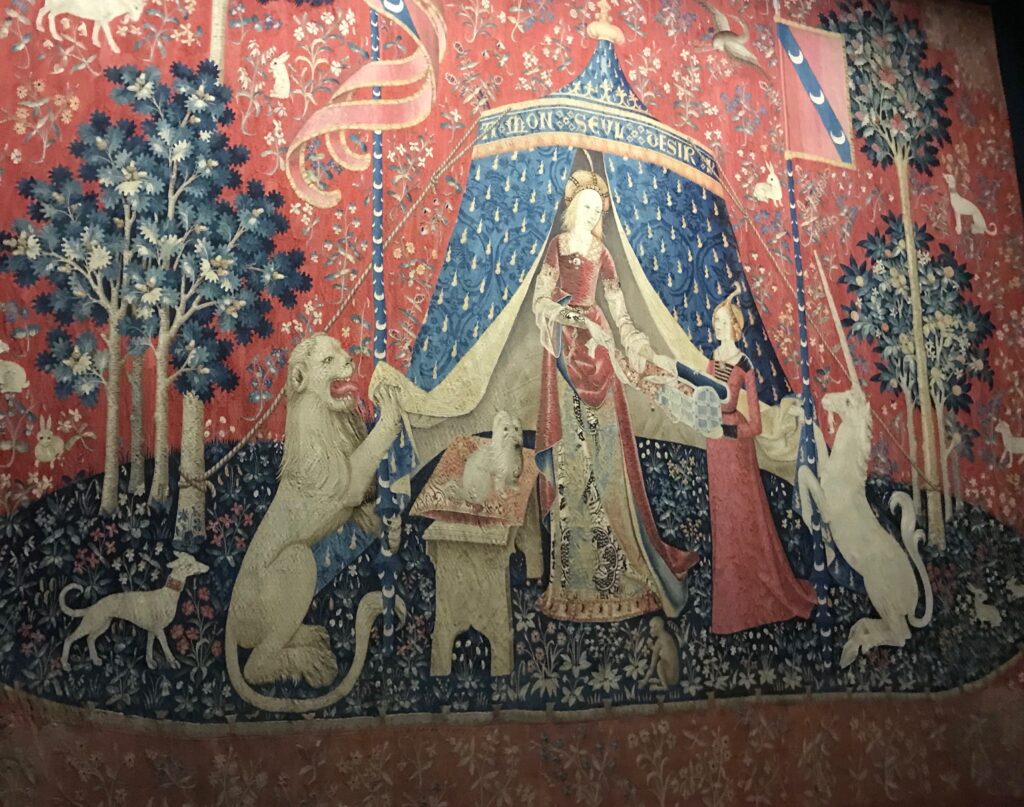Sixth Sense

I saw the Lady and the Unicorn tapestries years ago, but I’d never forgotten them. With their rich colors, chaste lady, distinctive unicorn and ever-present coat of arms, they seemed the epitome of the high Middle Ages and courtly love.
Yesterday I saw the six tapestries again, and, thanks to the Cluny Museum, was able to sit and contemplate their beauty and mystery.
The tapestries represent the five senses: touch, taste, smell, sight and sound. In the “touch” tapestry, for instance, the lady strokes the unicorn. In the “smell” tapestry, the lady’s companion presents her with a dish of carnations.
But there is a sixth tapestry, the one you see above, and experts aren’t exactly sure what that panel represents. One clue is in the words “Mon Seul Désir,” my only desire, and in the actions of the lady, who appears to be setting aside a necklace. Could it be that she is returning a gift, asserting her virtue? Many think so, which would make free will our “sixth sense.”
My own sense of these works, after spending a few minutes in their presence, was how they could transport me to a stiller, deeper world, a world of rich fibers and innate stillness, a world as different from ours as one could possibly be.